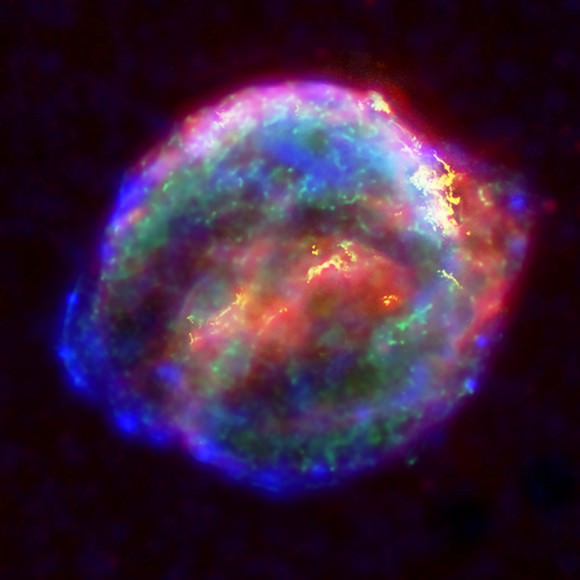
A supernova is a powerful event. For a brief moment in time, a star shines as bright as a galaxy, ripping itself apart in a last, desperate attempt to fight against its gravity. While we see supernovae as rare and wondrous things, they are quite common.
Based on observations of isotopes in our galaxy, we know that about twenty supernovae occur in the Milky Way every thousand years. These brilliant cosmic flashes fill the universe with heavy elements, and their remnant dust makes up almost everything we see around us. But supernovae won’t keep happening forever. At some point in the far future, the universe will see the last supernova.
When the last supernova occurs is the subject of a new paper. Using what we know about astrophysics, it calculates when the last “interesting” astrophysical event will occur. Supernovae, as we see them today, are caused by massive stars. Since not all of a star’s material is cast out by a supernova, the number of potential giant stars decreases with each generation. Within the next 100 billion years, large stars will stop forming, and the first supernova era will end.
cold, dark, and dead cosmos...
It is estimated that this transformation will take about 101100 years. As the core of a black dwarf becomes dense iron, it can reach a critical point. For black dwarfs between 1.2 and 1.4 solar masses, the iron core will become so dense that electron degeneracy can’t prevent gravitational collapse. The core will implode and recoil, creating a supernova explosion. The largest black dwarfs will explode first, followed by increasingly lighter black dwarfs. Eventually, some black dwarf a bit more massive than our Sun will become the last supernova in history, sometime around 1032000 years in the future.
It will be the last burst of light in acold, dark, and dead cosmos...
Ei kommentteja:
Lähetä kommentti